

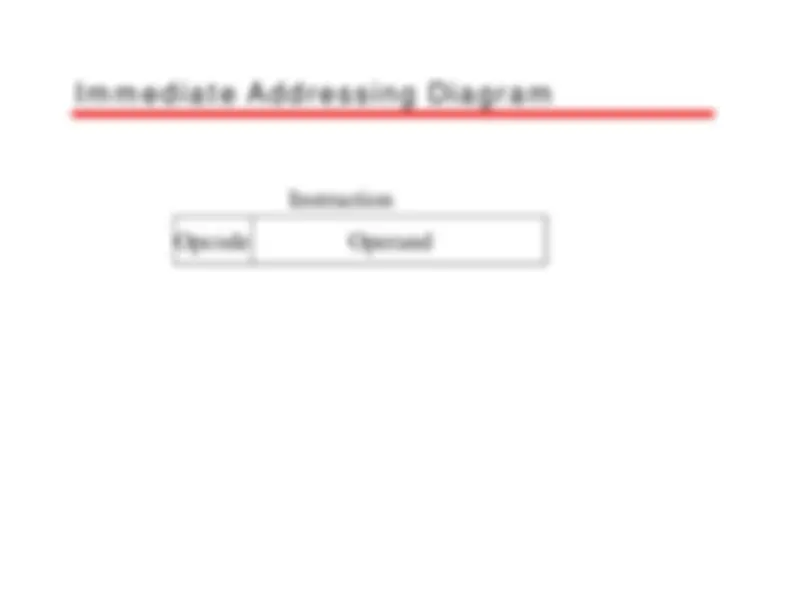
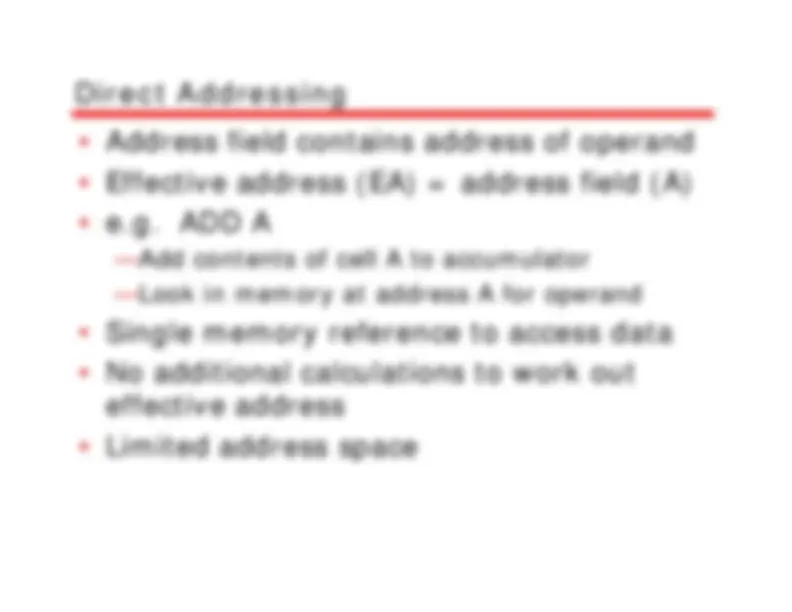
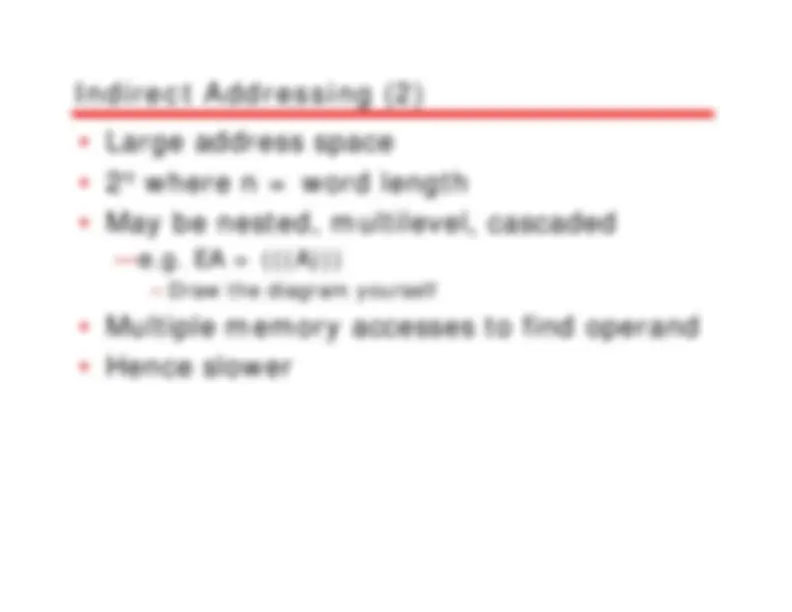
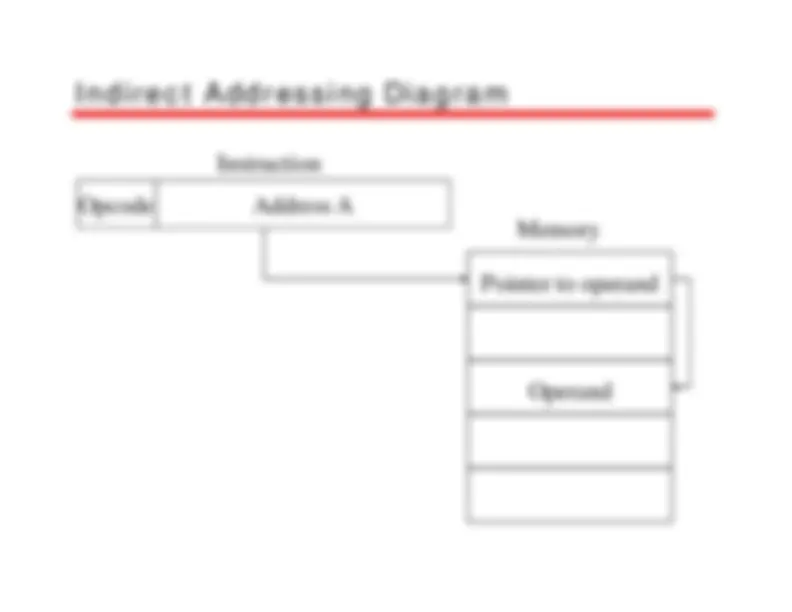
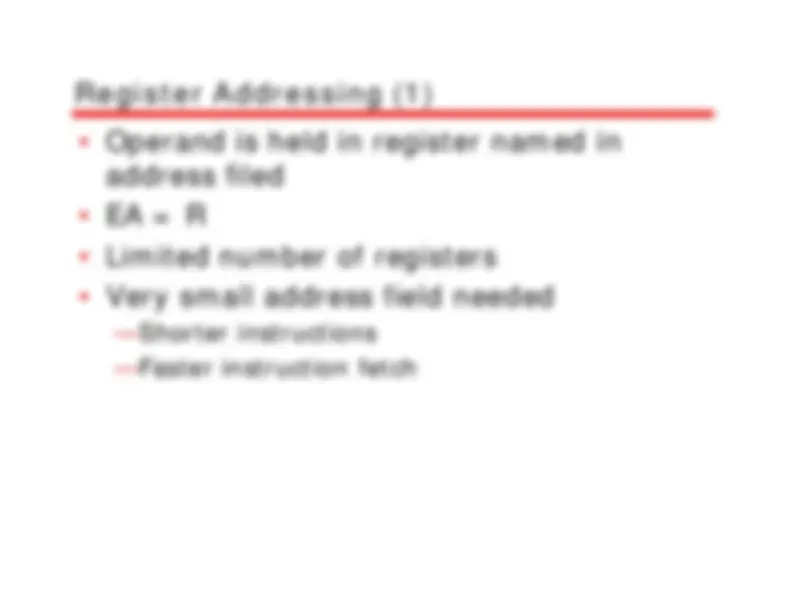
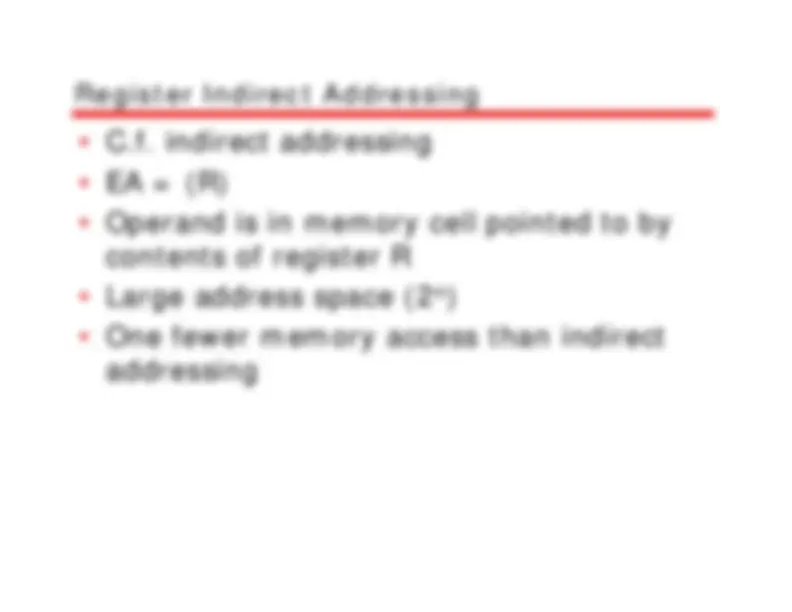
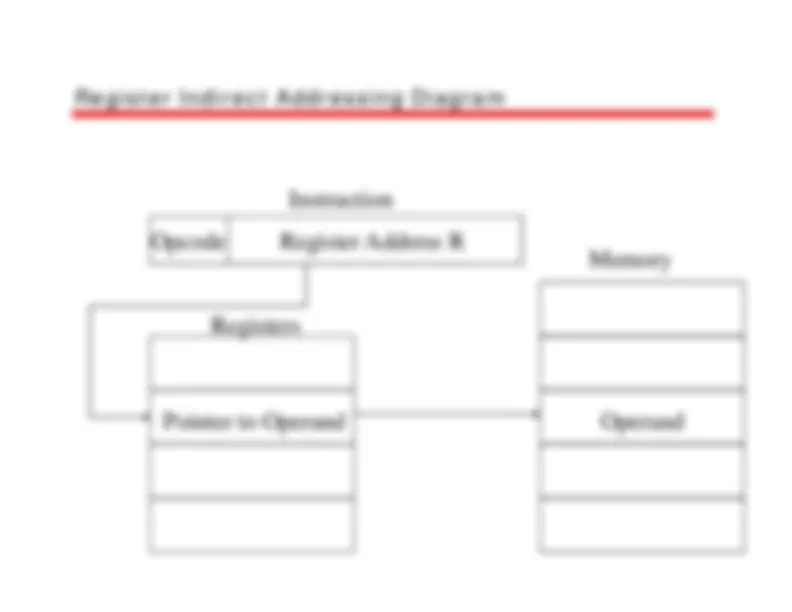
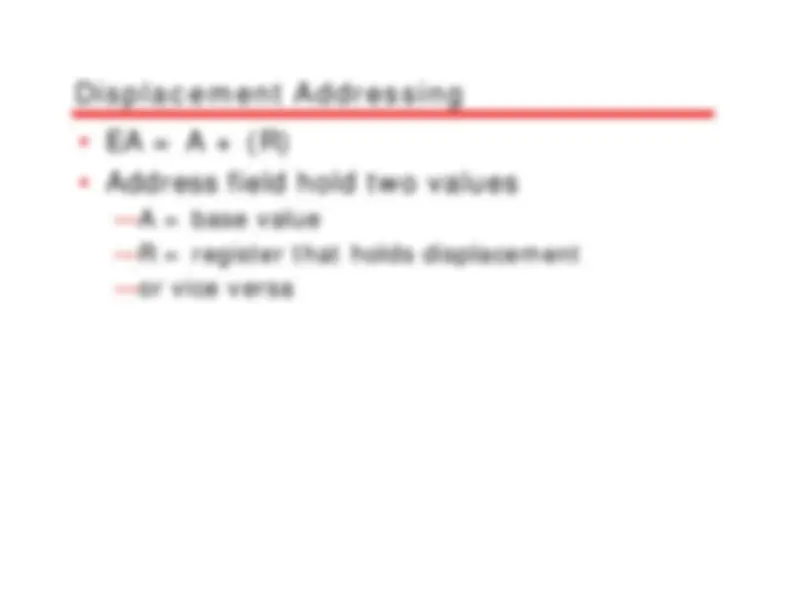
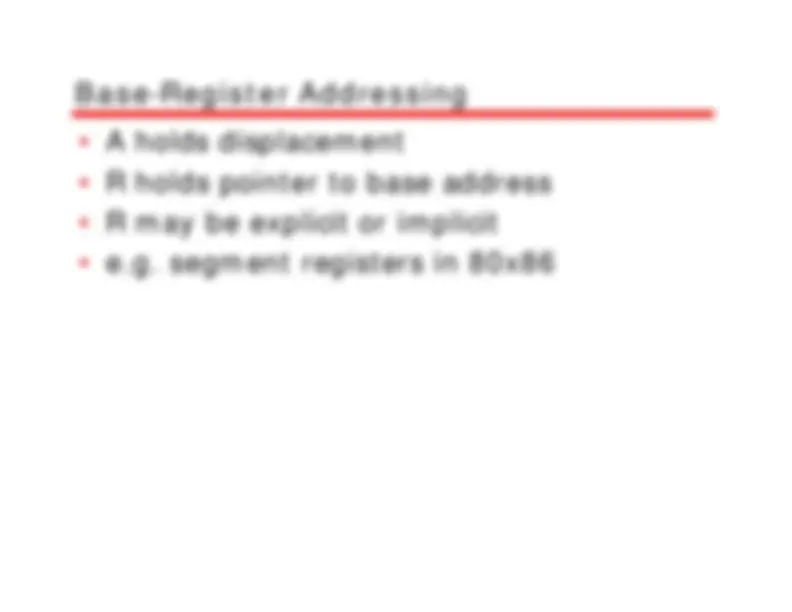
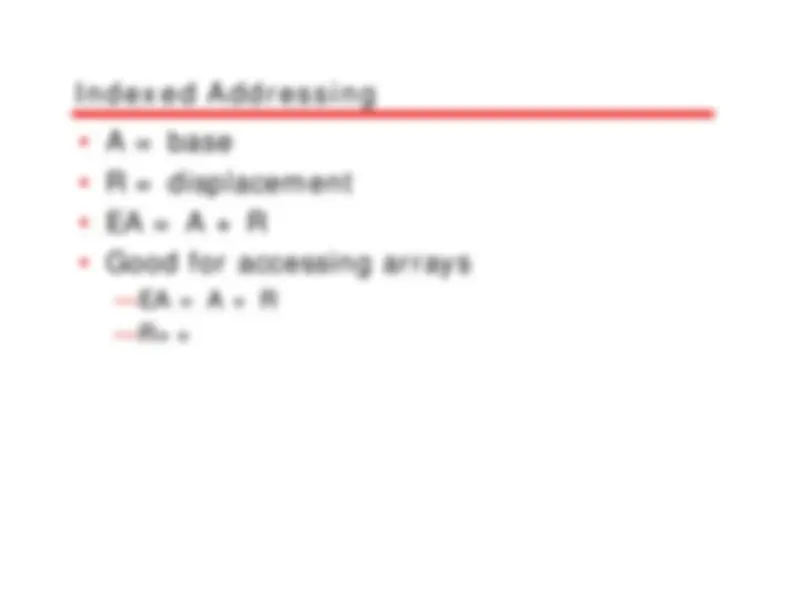
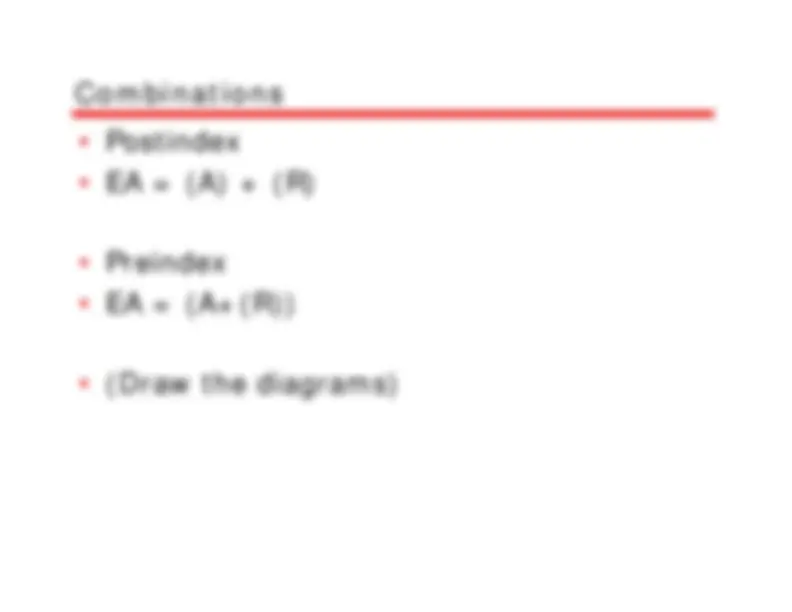
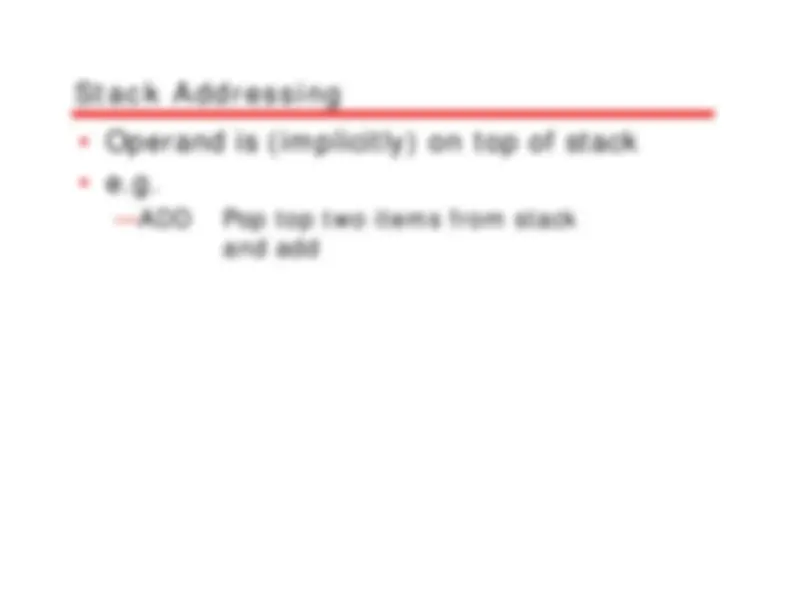
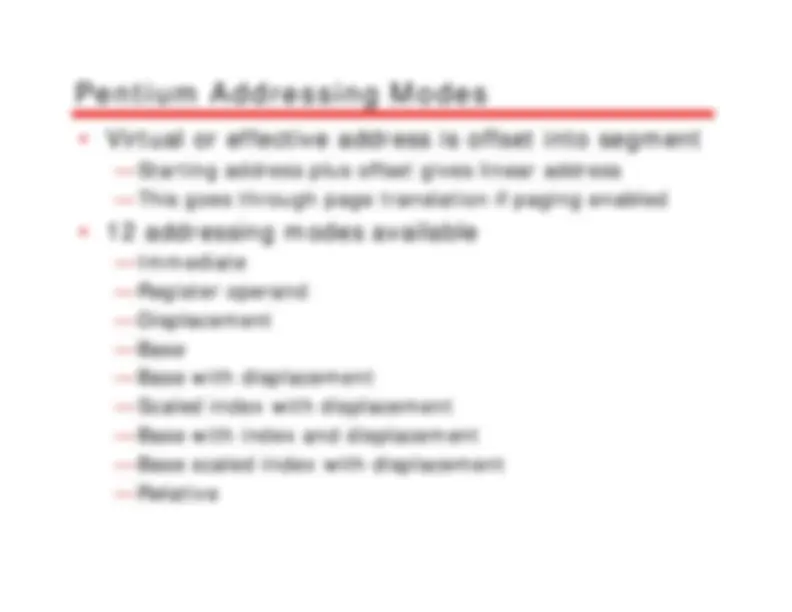
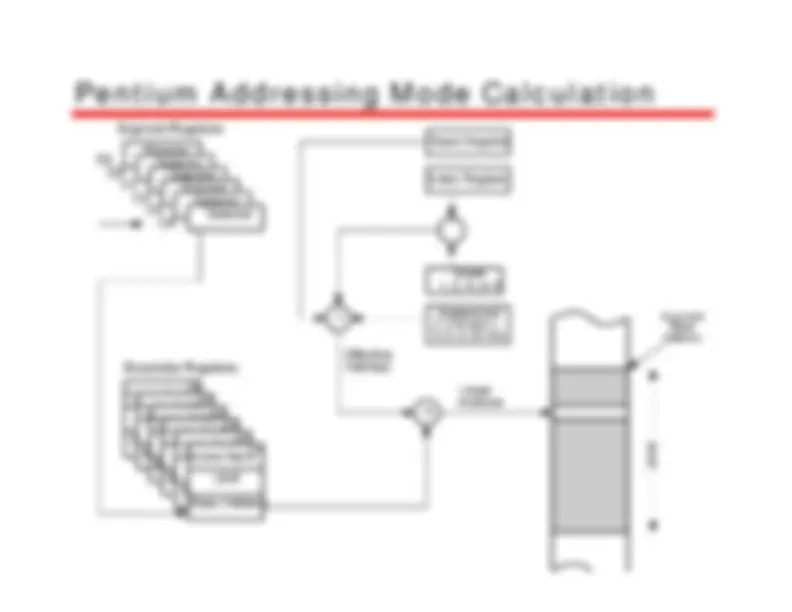
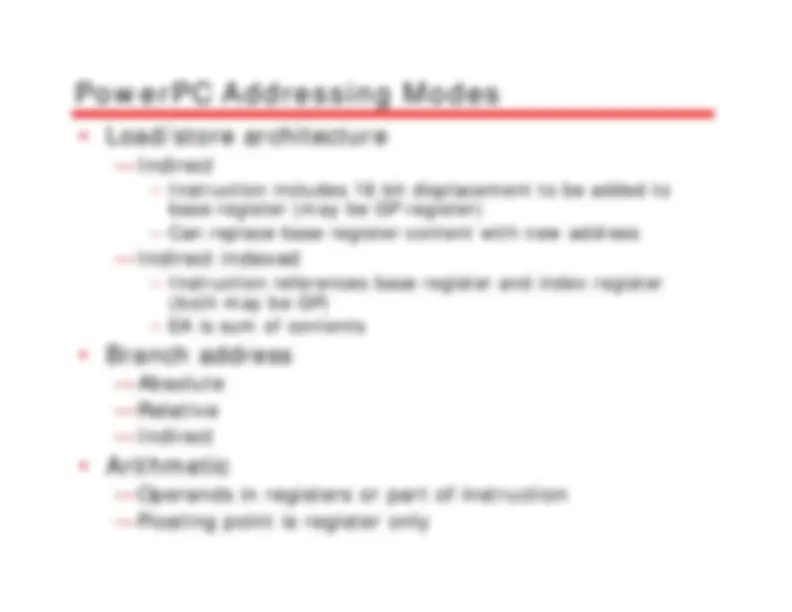
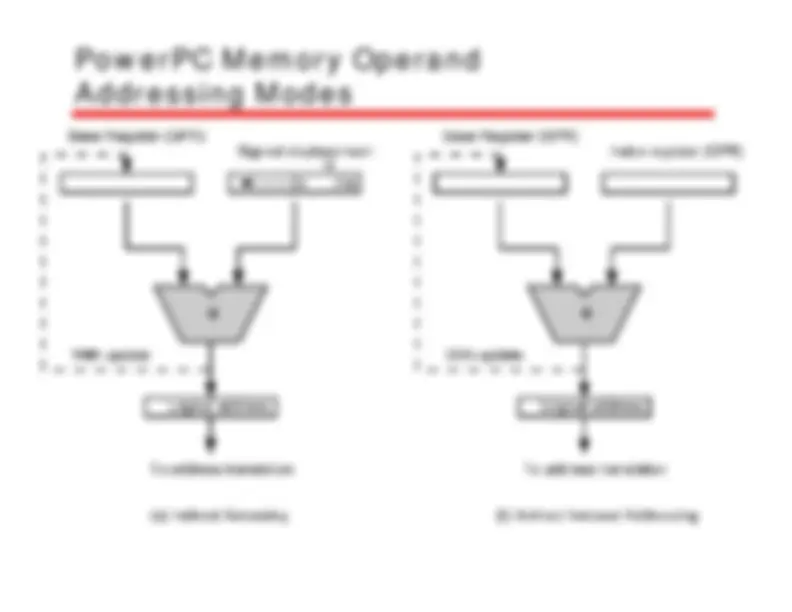
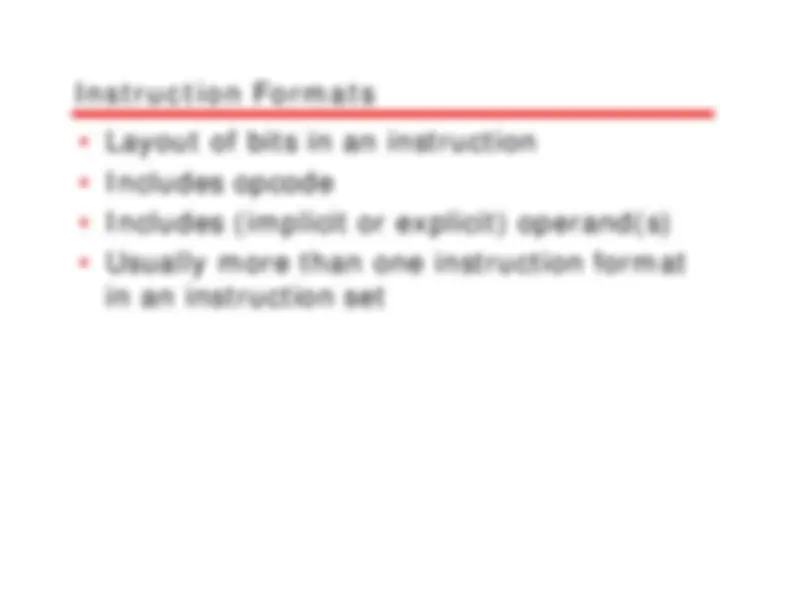
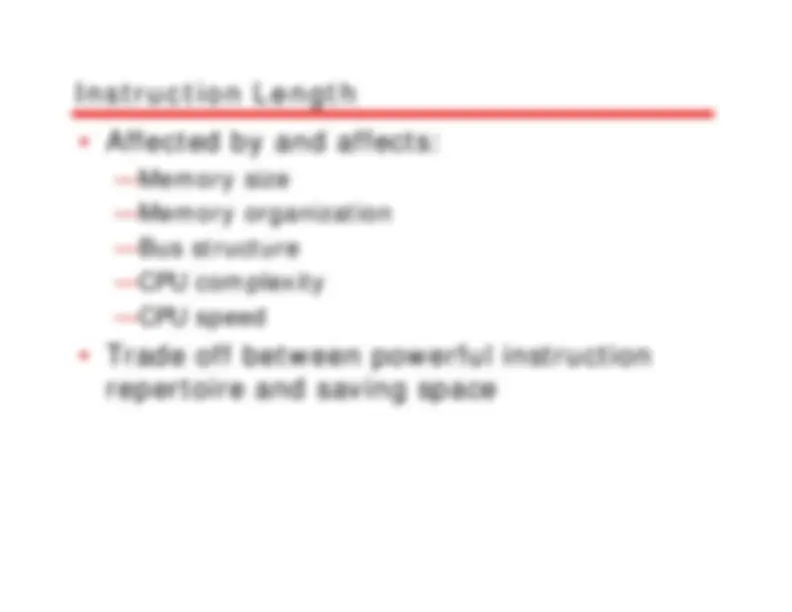
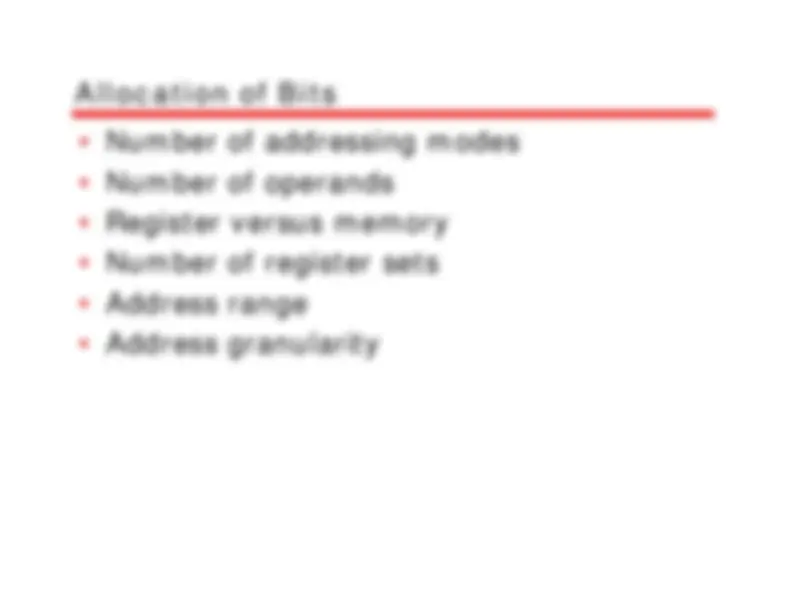
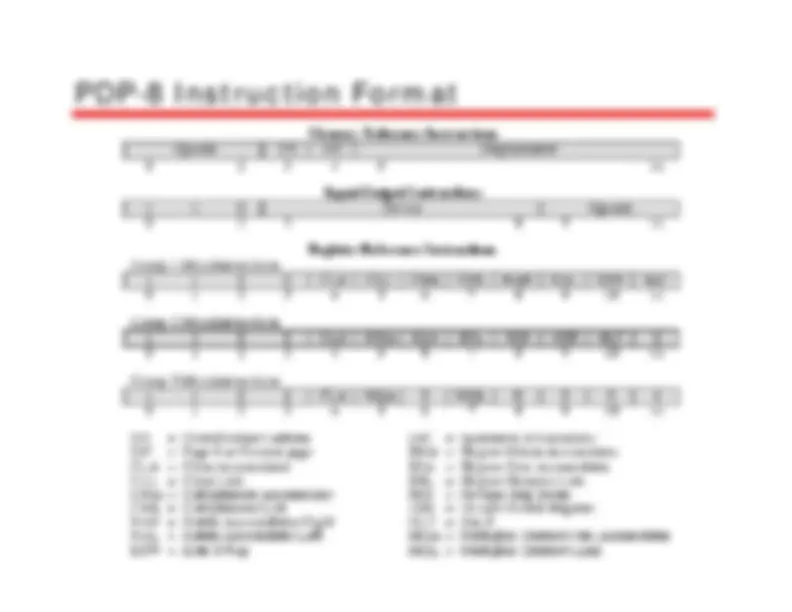
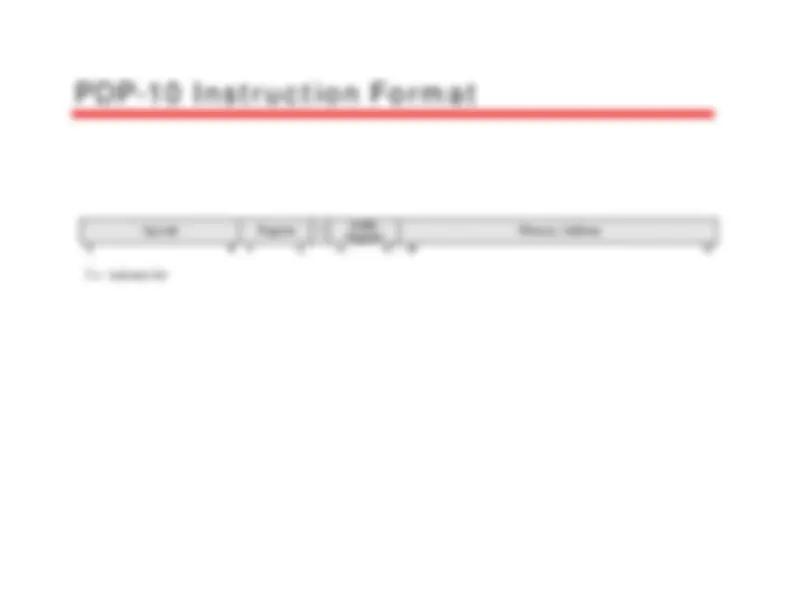
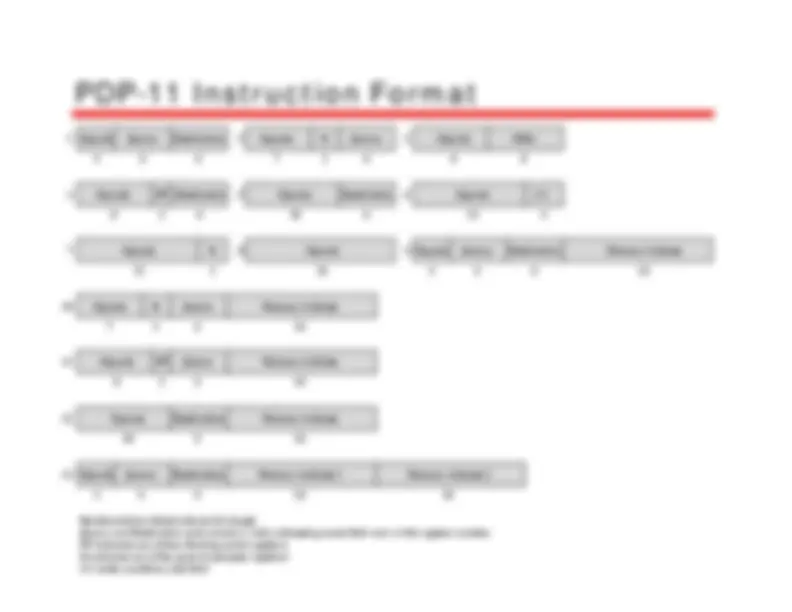
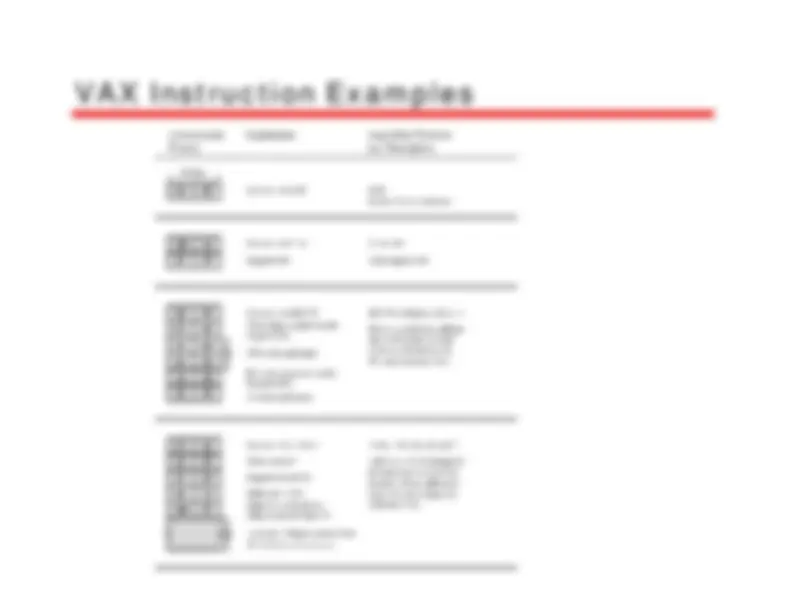
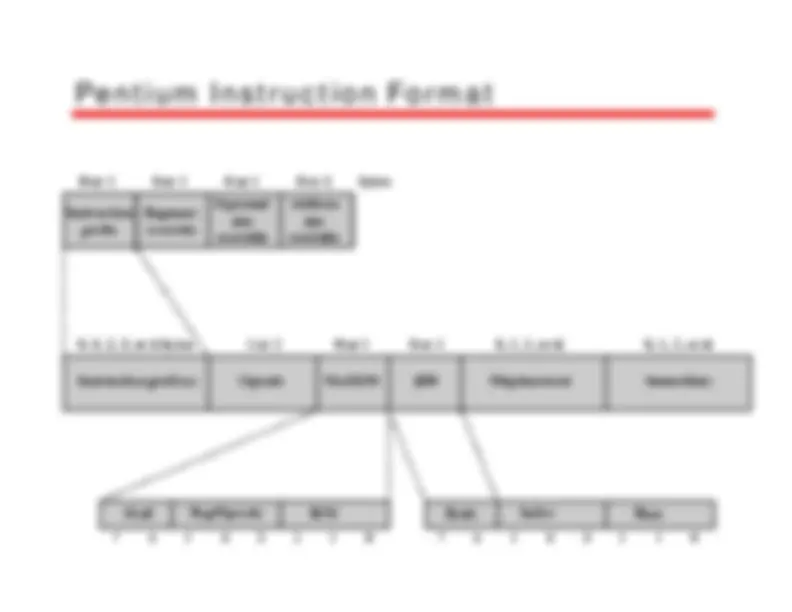
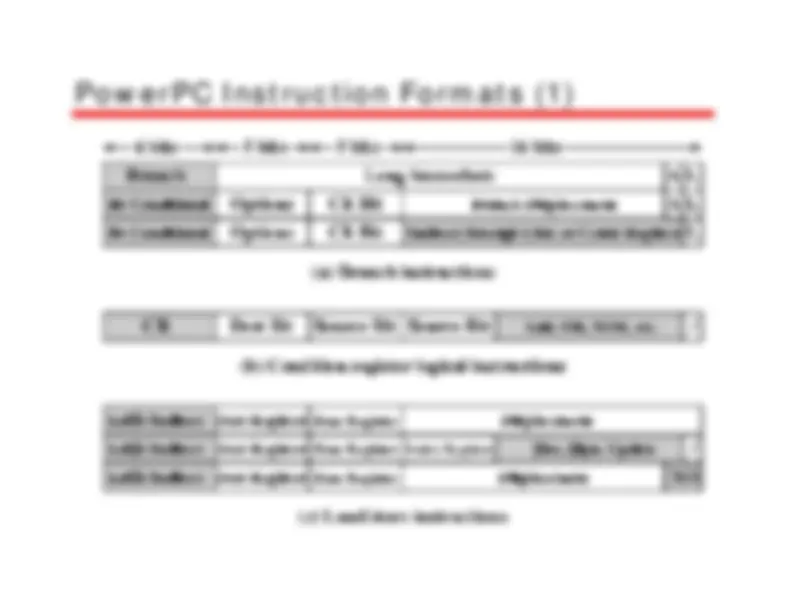
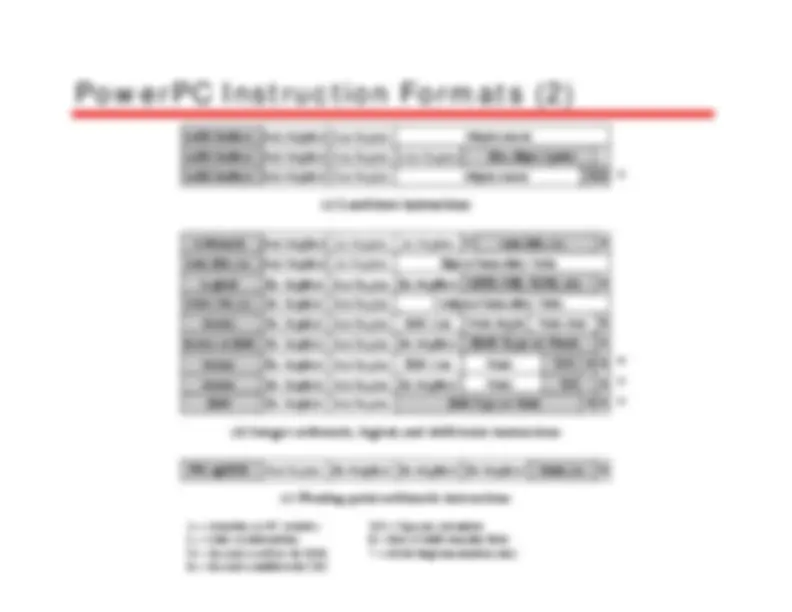



Study with the several resources on Docsity

Earn points by helping other students or get them with a premium plan


Prepare for your exams
Study with the several resources on Docsity

Earn points to download
Earn points by helping other students or get them with a premium plan
Community
Ask the community for help and clear up your study doubts
Discover the best universities in your country according to Docsity users
Free resources
Download our free guides on studying techniques, anxiety management strategies, and thesis advice from Docsity tutors
This chapter from William Stallings' Computer Organization and Architecture 7th Edition explores various addressing modes and formats used in instruction sets. Topics include immediate, direct, indirect, register, register indirect, displacement, relative, base-register, indexed, and stack addressing. Diagrams and examples are provided for each mode.
Typology: Slides
1 / 36

This page cannot be seen from the preview
Don't miss anything!





























William Stallings Computer Organization and Architecture 7 th^ Edition
Chapter 11 Instruction Sets: Addressing Modes and Formats
Addressing Modes
Immediate Addressing Diagram
Opcode Operand
Instruction
Direct Addressing
Indirect Addressing (1)
Indirect Addressing (2)
Register Addressing (1)
Register Addressing (2)
Register Indirect Addressing
Register Indirect Addressing Diagram
Opcode Register Address R
Instruction Memory
Pointer to Operand Operand
Registers
Displacement Addressing Diagram
Opcode Register R
Instruction
Memory
Pointer to Operand Operand
Registers
Address A
Relative Addressing
Indexed Addressing
Combinations